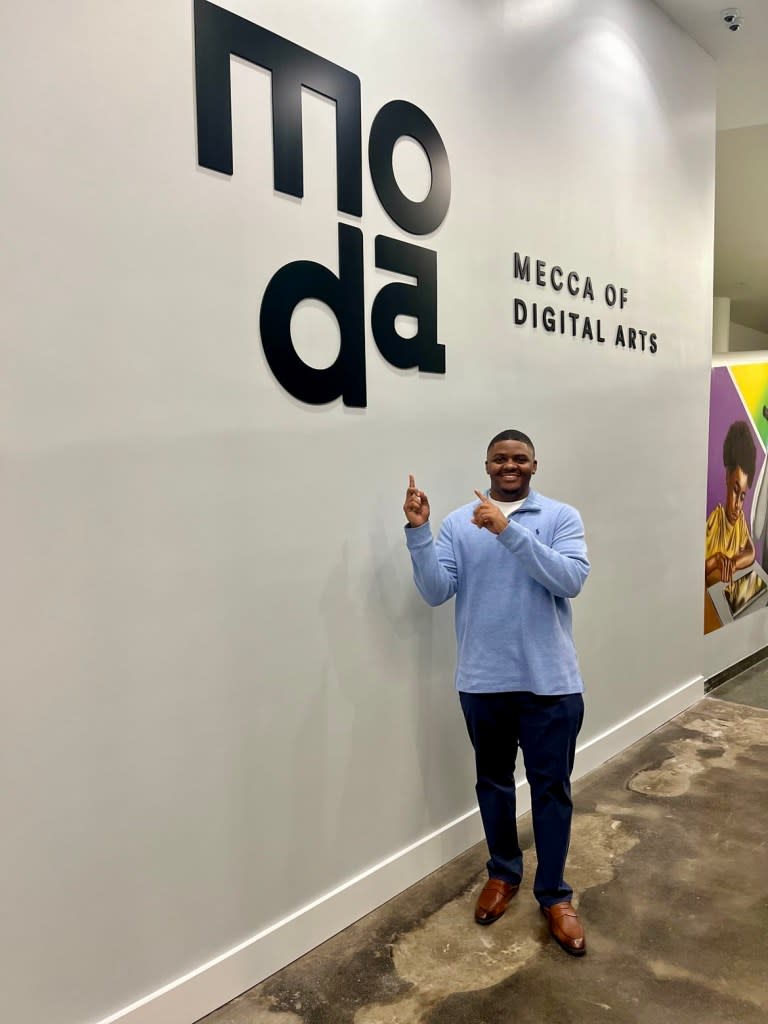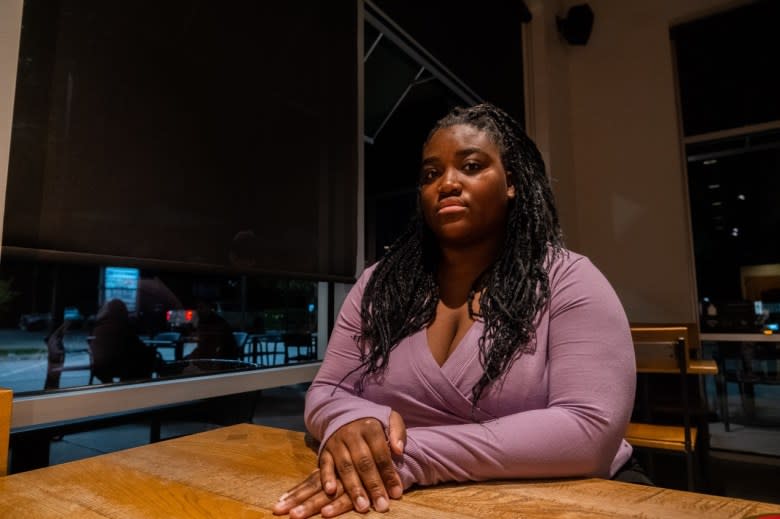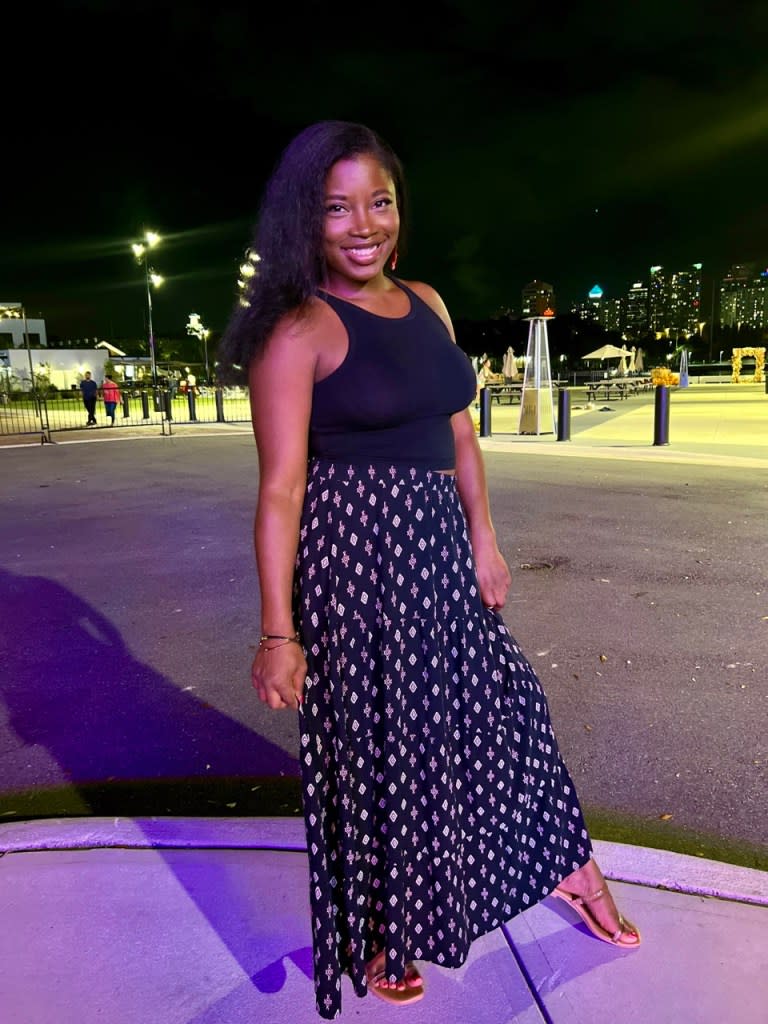Black Meccas Exist – But There’s a Catch
- Oops!Something went wrong.Please try again later.
This is part of a yearlong Capital B series on the country’s current Black migration, the most significant movement of Black people in the U.S. in 50 years. It was made possible, in part, by a grant from the Environmental and Epistemic Justice Initiative at Wake Forest University.
The search for a Black mecca since African Americans became relatively free 150 years ago has been constant.
There have been moments of reprieve: Harlem in the 1920s, Chicago in the 1940s, and Atlanta most recently. But it never seems to stick, as racial terror takes root, from racist vigilante violence to the more insidious form seen through discriminatory economic policies.
This reality has made Black movement never-ending, and as such, today, like those before them, Black Americans are migrating in record numbers in an attempt to find stability and opportunity. In pursuit once again for better lives, many are heading South, reversing the journeys their grandparents and great-grandparents once made.
Throughout the past year, Capital B has interviewed dozens of Black Americans who’ve moved across state lines about the reasons behind their migration and their cultural, political, economic, and environmental experiences in their new homes.
For some, it’s a painful acknowledgement that they have to return to the places that caused their ancestors harm — the belly of the U.S. slave empire.
For others, it’s been a rewarding journey to be surrounded by Blackness while building new lives in the region where more than half of all Black Americans already live.
What follows is a collection of five of these relocation stories.
The new standard
Attending an HBCU was always Mia Brooks’ biggest dream. Spending your youth trudging through the snow across “really white, like really white” Minnesota, will do that to you, she says.
Growing up, she was envious of her family in Detroit and amazed at how a city could foster Black life — that “Black meccas could exist.”
So, she says, she obviously had no choice but to set her sights on Jackson State University in Jackson, Mississippi, the second-Blackest city in America. Despite the challenges the city — and region — constantly face, from water woes to racist gerrymandering, after graduating, she quickly realized she could never leave the South again.
Her search for a job in communications led her to focus on Atlanta or Houston, like many other Millenials moving South. New Black Southerners are skewing younger and more college-educated in large cities across the region, including Houston, Atlanta, and Charlotte, North Carolina. In Texas, the migration has been credited with shrinking the racial wealth gap between Black and white.
For Brooks, seeing Black prosperity made her Midwest home, which is the worst region for Black people according to life outcomes, even less appealing.
“After being in a place where Black was the standard, there was no way I could go back up North,” she says from her home in Houston, where she has lived since 2017. “It would be a depressing thing for me to go back to a [majority-white] type of environment.”
Every year, she and thousands of other H-Town residents attend the city’s Black Heritage Festival, an outdoor musical festival celebrating Black Texas. It’s the night where she sees most clearly the value of being surrounded by Blackness.
“Houston has this hand sign that they do — you make an H with your hand. So, [last year], when Bun B was telling the crowd to throw their H’s up — I’ve never done it before because I’m not from here, but I felt comfortable doing it then.”
It was the moment that concretely affirmed her decision to migrate; She’s ready to shed her Minnesota coat completely — well, almost. “I tell people that once I get to 10 years, I’m just gonna start saying I’m from here.”
Dreams dashed
When Brittany Gibbs received notice that she had been awarded a Section 8 subsidized housing voucher in Jacksonville, Florida, last year, she felt like she had won the “golden ticket for society.”
She believed that stable, affordable housing would help her end her family’s cycle of flight that, over generations, had guided them through different states in the Midwest and Southeast.
So, the single mother packed four of her five children in her car and drove to Florida. The move was aided by the fact that the nation’s 11th-largest city was quickly becoming a prominent hub for Black culture and entrepreneurship.
But when she settled on Jacksonville’s Northwest side, where a third of the city’s Black population lives, she saw a different reality than expected.
It started with housing. A faulty faucet in her mobile home led to a major leak before gaps in the trailer’s shell caused a bug infestation.
Then, school started. The elementary school where three of her children should have attended had been shuttered for years and put on the country’s toxic clean-up list because it was once a landfill home to toxic ash from municipal incinerators. And because the city is so sprawled, her eldest daughter must wake up at 4 a.m. every day to catch a bus to school.
Severe weather doesn’t help those long commutes. When it rains in her community, it practically always floods — the result of housing policies that allowed the Black neighborhood to be built on a floodplain.
And the city’s growing Black-white divide has left her constantly uneasy. Like her parents and their parents before them, she had to sit her children down for the talk.
Less than a year into her time in Jacksonville, a white gunman killed three Black people at the dollar store that the family frequented.
“But at the end of the day,” she admits, “it is kind of expected when dealing with these white people. Ain’t nobody safe around here.”
So, despite her initial hopes, the multi-generational expectation of moving in search of safety has returned — and it has left her confused. She’s left to battle the lack of investment in majority-Black communities or daily racist interactions in non-Black ones, she believes.
“We’re stuck on this downhill ride,” she says about the churn of Black migration. “No matter where we plant our tree, it’s like there are a few bad apples that spoil the whole bunch.”
Still, growth prevails. As memorial candles still flicker on the site of the mass shooting, more than a dozen new homes have recently been erected in Gibbs’ neighborhood, according to data from the National Association of Realtors.
The prosperity paradox

As Roderick Wilkins’ aspirations pushed him further away from his home, a small majority-Black town where 45% of residents lived in poverty, building generational wealth was at the forefront of his mind.
“I’m probably the first in my family to live any kind of distance away from home,” the 26-year-old product designer says. “For me, this is about setting a foundation that has never been set before.”
While in graduate school, he bounced around the West, picking up internships in California and Oregon — but the region didn’t stick. It lacked culture, he thought, and was way too expensive. He had his eyes set on the South, and Charlotte in particular.
Not only was the city’s college-educated Black population growing, its economy and housing market were booming, too. The Black homeownership rate is the highest in the South as the homeownership gap between Black and white declines yearly.
He hopes to buy property soon, but he faces the internal battle that a lot of young Black professionals are facing: becoming a gentrifier and raising the cost of living for struggling Black residents.
“Charlotte is definitely growing, and the prices are starting to reflect that,” he says. “It’s obvious that a lot of the new apartments and housing are going to new residents, not the old.”
But he believes, as new subdivisions pop up every day, somebody will have to fill them.
“There is just a lot of opportunity here to start something new, to build for Black people,” he says while eating lunch at a plush new food hall located in a majority-Black community where housing prices have grown three times as much as the national average since 2015.
Sunshine State blues

Waverylynne Brown had given up on traversing the streets of her hometown, Colorado Springs, Colorado, long before the coronavirus pandemic shut everything down. Too many landmarks reminded her of her father, who passed away in 2017.
So when Brown’s mother, whose arthritis was constantly inflamed by Colorado’s long winter season, said she was moving to Florida toward the end of 2020, the then 21-year-old followed. For Black Americans, family has historically been one of the strongest drivers of migration, studies show, because more so than white people, families are Black people’s primary social unit.
Attracted by the weather and “refreshingly” lax COVID-19 rules, they settled in Jacksonville. (In the first two years of the pandemic, Florida ranked third in COVID-19 deaths. As of March 2023, it was 45th in rates of vaccination.)
But, moving from the West, where just 10% of Black Americans live, to the South, where roughly 60% of all Black people live, presents a unique challenge.
“Being a Black woman coming here and meeting other Black women and men in abundance was really nice at first,” she says, “but then I also realized our slang, our talk, our interests are way different in the West.”
Brown is far from alone in the sentiment, which she thinks contributes to her depression. Studies show that at all ages, there is a link between moving and poor mental health, known commonly as “relocation depression.” (However, these studies fail to consider the different experiences based on race.)
As she reaches her third anniversary in Florida, she’s been able to make only one true friend: “It feels like I’m the outcast.”
Thriving with transitions

Genisia Green has learned not only to be OK with change, but to thrive with it. She’s had to, as her goals and jobs over the past decade have taken her from life in Los Angeles to living in three of the 15 fastest-growing cities for Black folks — Charlotte, Dallas, and Tampa, Florida.
It hasn’t been all rosy. When she moved to Charlotte in 2019, she experienced “a mini Atlanta,” where many young Black people like her were “looking to elevate in life.” But then came the coronavirus pandemic.
Left inside by her remote job and the state’s coronavirus precautions, she envied her neighbors further south in Florida whose lives she thought weren’t wildly different during the pandemic because precautions were soft.
So she decided to join. But within a year of living in the Tampa Bay area, Hurricane Ian — the deadliest hurricane in Florida since 1935 — left at least five people in her county dead and caused millions in damages.
Still, she never lost faith, which seems to have worked in her favor.
“I feel like every move is what you make it, so I like when people kind of learn the city for themselves. It’s so different from what you hear from other people,” she explained.
When Capital B caught up with her this year, she was living in a new home outside of Dallas with her husband, whom she met in Tampa and recently married. Life is good, she says, but she has been more concerned with how climate change may impact her future, particularly her access to water as Dallas’ supplies struggle to keep up with its population growth.
Despite some of the things out of her control, from pandemics to natural disasters, she believes in the ability of Black folks to build new communities, expand cultures, and find stability — even amidst stereotypes of Southern life.
“Black culture [in the U.S.] is not always associated with wanting to explore. We don’t always get the chance to take risks, to travel and explore, so I say: Just do it if you can.”
The post Black Meccas Exist – But There’s a Catch appeared first on Capital B News.

